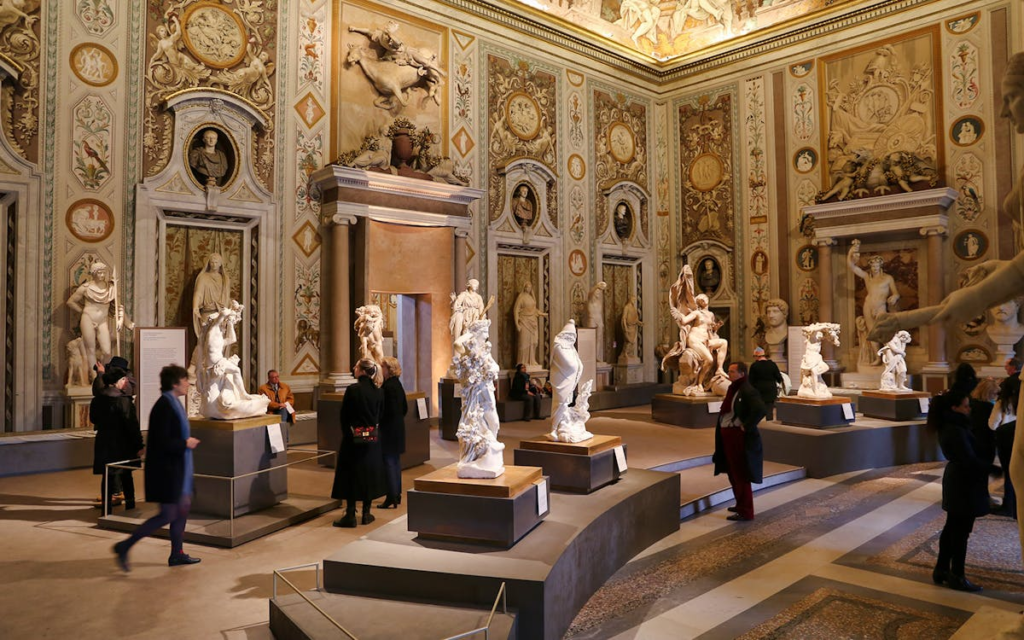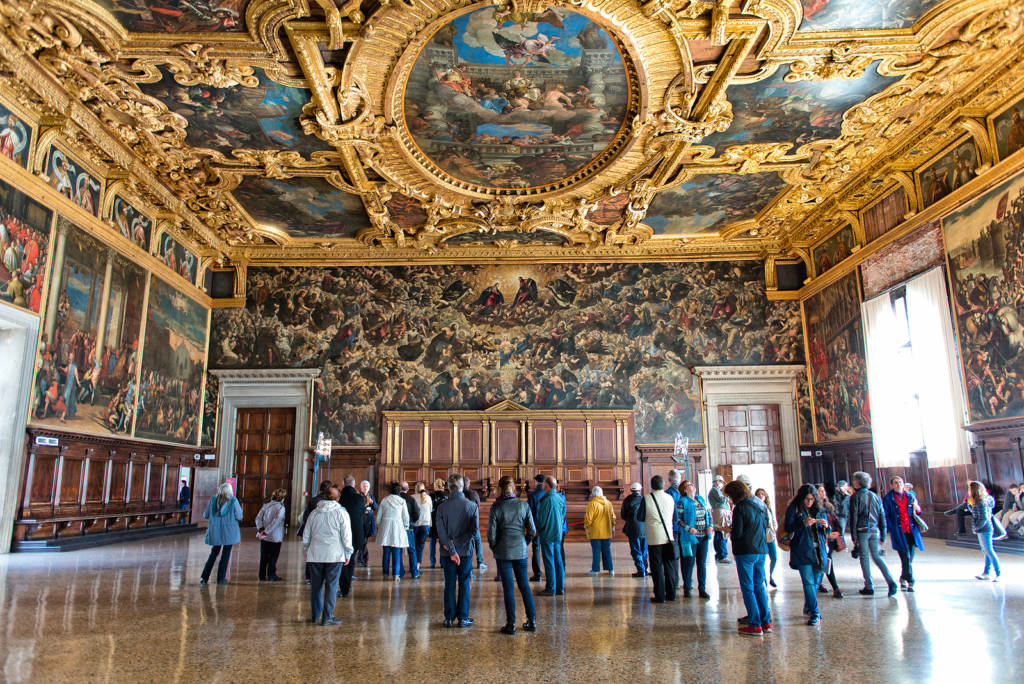Italy is a country where history, art, and culture intersect at every corner, and its museums are among the finest in the world. From Renaissance masterpieces that have shaped the course of Western art to ancient Roman artifacts that tell the stories of empires long past, Italy’s museums are gateways into the heart of human creativity and achievement.
Visiting these museums is not just about appreciating art—it’s about stepping into the very essence of Italian history, learning how this nation became a cornerstone of global artistic and intellectual thought. For those planning a trip to Italy, knowing which museums to visit, what to expect, and how to make the most of your time can make all the difference. We will explore the top 8 museums in Italy, detailing their highlights, prices, and visitor information to help you make the most of your cultural exploration.
1. The Uffizi Gallery (Florence)

The Uffizi Gallery in Florence is arguably the most famous museum in Italy and one of the most renowned art museums in the world. Housed in a 16th-century building designed by Giorgio Vasari, the Uffizi is home to an extraordinary collection of Renaissance art, including masterpieces by Leonardo da Vinci, Michelangelo, Raphael, and Botticelli.
- Highlights: Botticelli’s “The Birth of Venus” and “Primavera,” Michelangelo’s “Doni Tondo,” and da Vinci’s “Annunciation.”
- Visitor Information:
- Tickets: €20 (high season), €12 (low season). Online booking is recommended to avoid long queues.
- Hours: Open Tuesday to Sunday, 8:15 AM to 6:50 PM; closed on Mondays.
- Annual Visitors: Over 2 million.
2. Vatican Museums (Vatican City)

The Vatican Museums in Vatican City house an immense collection of art and historical artifacts collected by the Roman Catholic Church over centuries. The museums include the famous Sistine Chapel, with its ceiling painted by Michelangelo, as well as the Raphael Rooms and countless works of art from ancient Greece and Rome.
- Highlights: Michelangelo’s Sistine Chapel ceiling, Raphael’s “The School of Athens,” and the Gallery of Maps.
- Visitor Information:
- Tickets: €17 (standard admission), €8 (reduced). An additional €5 for online booking to skip the line.
- Hours: Monday to Saturday, 9:00 AM to 6:00 PM; closed on Sundays (except the last Sunday of the month, free entry).
- Annual Visitors: Over 6 million.
3. Galleria Borghese (Rome)

Located in the beautiful Villa Borghese Gardens in Rome, the Galleria Borghese is an intimate museum showcasing a stunning collection of Baroque art. The gallery is famous for its sculptures by Gian Lorenzo Bernini and paintings by Caravaggio, Titian, and Raphael.
- Highlights: Bernini’s “Apollo and Daphne,” Caravaggio’s “David with the Head of Goliath,” and Titian’s “Sacred and Profane Love.”
- Visitor Information:
- Tickets: €13 (standard), €7 (reduced), and a reservation fee of €2.
- Hours: Tuesday to Sunday, 9:00 AM to 7:00 PM; closed on Mondays.
- Annual Visitors: Approximately 500,000.
4. The National Archaeological Museum (Naples)

The National Archaeological Museum in Naples is a must-visit for anyone interested in ancient history. It houses one of the most extensive collections of Greek and Roman artifacts, including treasures from the nearby archaeological sites of Pompeii and Herculaneum.
- Highlights: The Farnese Collection of ancient Roman statues, mosaics from Pompeii, and the famous “Alexander Mosaic” from the House of the Faun.
- Visitor Information:
- Tickets: €18 (standard), €2 (for EU citizens aged 18-25).
- Hours: Open daily except Tuesday, from 9:00 AM to 7:30 PM.
- Annual Visitors: Over 500,000.
5. The Galleria dell’Accademia (Florence)

The Galleria dell’Accademia is another gem in Florence and is best known for housing Michelangelo’s iconic statue of David. In addition to David, the museum displays an impressive collection of Renaissance paintings and sculptures.
- Highlights: Michelangelo’s “David,” “Prisoners,” and works by Florentine artists like Botticelli and Ghirlandaio.
- Visitor Information:
- Tickets: €12 (standard), €2 (reduced). An additional €4 for online reservations.
- Hours: Tuesday to Sunday, 8:15 AM to 6:50 PM; closed on Mondays.
- Annual Visitors: Over 1.7 million.
6. The Egyptian Museum (Turin)

The Egyptian Museum in Turin is the second-largest Egyptian museum in the world, after the one in Cairo. It houses an extraordinary collection of artifacts from ancient Egypt, including mummies, statues, and other treasures that span thousands of years of history.
- Highlights: The Tomb of Kha and Merit, the Temple of Ellesiya, and numerous mummies and papyrus scrolls.
- Visitor Information:
- Tickets: €15 (standard), €11 (reduced). Free entry for children under 6.
- Hours: Open daily from 9:00 AM to 6:30 PM.
- Annual Visitors: Over 850,000.
7. The Peggy Guggenheim Collection (Venice)

Located in Venice’s beautiful Palazzo Venier dei Leoni, the Peggy Guggenheim Collection is one of Europe’s most important collections of modern art. The museum showcases works by renowned artists such as Picasso, Pollock, Kandinsky, and Mondrian.
- Highlights: Works by Picasso, Jackson Pollock’s “Alchemy,” and masterpieces of Surrealism and Abstract Expressionism.
- Visitor Information:
- Tickets: €16 (standard), €14 (reduced). Free for children under 10.
- Hours: Open daily from 10:00 AM to 6:00 PM; closed on Tuesdays.
- Annual Visitors: Approximately 400,000.
8. The Doge’s Palace (Venice)

The Doge’s Palace, or Palazzo Ducale, is a masterpiece of Gothic architecture and one of the most important landmarks in Venice. Once the residence of the Doge of Venice and the seat of Venetian government, the palace now functions as a museum, offering visitors a glimpse into the history and splendor of the Venetian Republic.
- Highlights: The Bridge of Sighs, the Golden Staircase, and grand rooms adorned with paintings by Titian, Tintoretto, and Veronese.
- Visitor Information:
- Tickets: €25 (standard), €13 (reduced).
- Hours: Open daily from 9:00 AM to 6:00 PM.
- Annual Visitors: Over 1.3 million.
Tips and Advice for Visiting Museums in Italy
- Book Tickets in Advance: Many of Italy’s top museums, especially the Uffizi Gallery, Vatican Museums, and Galleria dell’Accademia, experience long lines, especially during peak tourist season. Booking tickets online in advance allows you to skip the queues and guarantees entry at your preferred time.
- Visit During the Off-Season: To avoid crowds, consider visiting Italy’s museums in the off-season (late fall to early spring). Not only will you encounter fewer visitors, but you may also find cheaper accommodations and travel costs.
- Take Guided Tours: Many museums offer guided tours in multiple languages. A guided tour is a great way to enrich your visit, especially if you’re not well-versed in art history or archaeology. Guides can provide context and insights that might not be obvious when viewing the exhibits on your own.
- Plan for Multiple Visits: Some of Italy’s museums, such as the Vatican Museums and the Uffizi Gallery, are vast, and it can be overwhelming to see everything in one visit. If possible, plan multiple shorter visits to fully appreciate the collections without suffering from “museum fatigue.”
- Check Free Entry Days: Some museums offer free entry on specific days, usually the first Sunday of every month. This can be a great way to save money, but keep in mind that these days can be very crowded. It’s worth arriving early to get a head start.
- Respect the Rules: Italian museums typically have strict rules regarding photography, especially in areas with delicate artwork. Flash photography is usually prohibited, and some rooms may have a no-photo policy altogether. Be sure to respect the museum guidelines to preserve the integrity of the art.
- Wear Comfortable Shoes: Museums like the Vatican Museums and the Doge’s Palace involve a lot of walking, sometimes on uneven surfaces. Wearing comfortable shoes will make your experience more enjoyable, especially if you plan to spend several hours exploring.
- Bring a Water Bottle: Museums can get warm, especially in the summer months. Carry a refillable water bottle to stay hydrated throughout your visit, though be sure to check if drinking is allowed inside the museum.
Read more : Best 6 EU-Based Digital Nomad Visa of All Time









